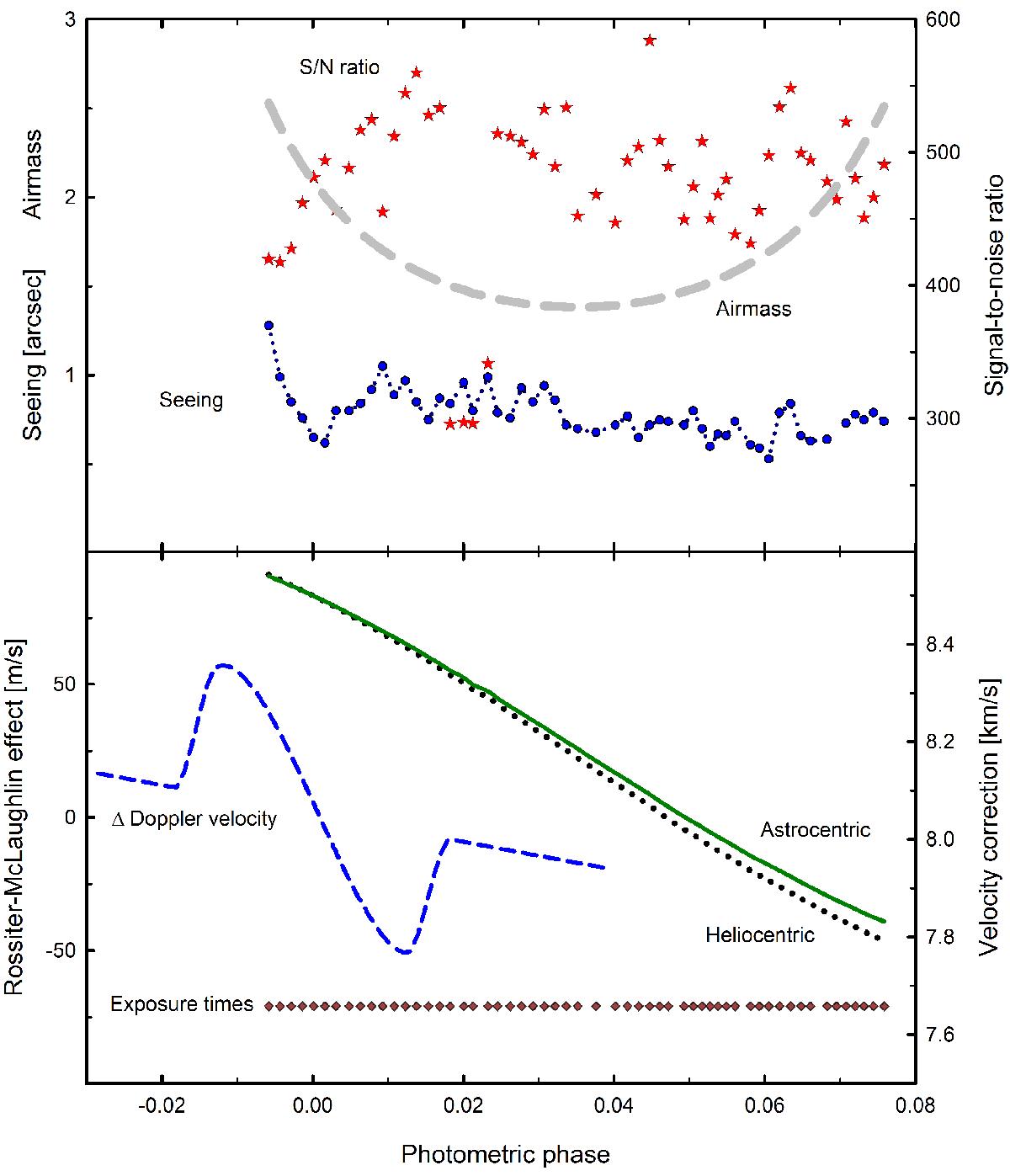Fig. 2

Parameters for the UVES observations. The photometric S/N refers to the best-exposed echelle order as computed by the data reduction pipeline. Passing clouds caused a drop around orbital phase 0.02 (photometric phase is zero at transit mid-point during the 3.52-day orbit of the planet). Data from the Paranal seeing monitor show image stability despite substantial airmass changes during the night. The exposure starting times are for the REDL part of the UVES spectrum; the sequence started with the transit already in progress. The heliocentric velocity correction concerns the velocity vector between the observatory and the direction toward the star, while the astrocentric correction also takes into account the barycentric motion of HD 209458 induced by its planet. The Rossiter-McLaughlin signature during the transit was adapted from Winn et al. (2005) and Wittenmyer et al. (2005).
Current usage metrics show cumulative count of Article Views (full-text article views including HTML views, PDF and ePub downloads, according to the available data) and Abstracts Views on Vision4Press platform.
Data correspond to usage on the plateform after 2015. The current usage metrics is available 48-96 hours after online publication and is updated daily on week days.
Initial download of the metrics may take a while.


